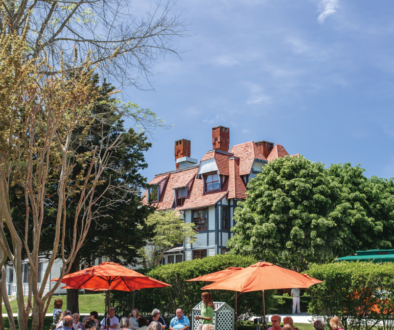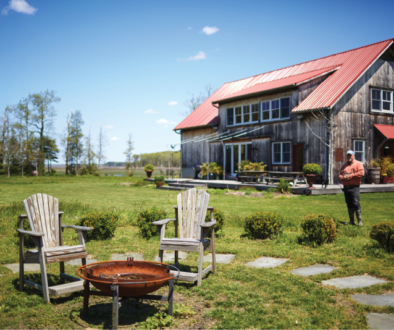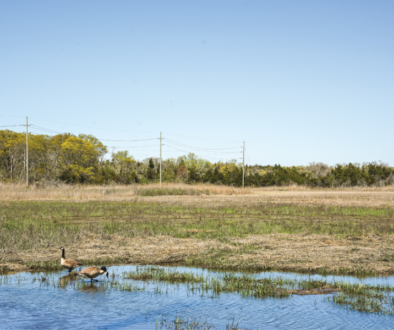Designated Thriver
Cape May celebrates 50 years as National Historic District

December 29, 1970. The National Park Service designates Cape May as a National Historic District and lists the district on the National Register of Historic Places. The City of Cape May, local Congressman Charles Sandman, Senator Clifford P. Case, and others are notified, but no information about the award is given to the people of Cape May until the story breaks a month later in the January 28th issue of the Star and Wave. The newspaper reports that a miscommunication between the Senator’s and Representative’s offices delayed the announcement. But in reality, the city government is unhappy and unwilling to announce the designation. When the designation is finally made public, a firestorm erupts, splitting the town apart, and creating months and months of controversial argument and misunderstanding reported week after week in the local and national press. The unending publicity thrusts tiny Cape May into the national spotlight.
Even 50 years ago, the back story, to a certain extent, was one of tension between the local community and the full-time summer people. Most people know that Cape May suffered wide destruction during the now infamous 1962 Nor’easter. This catastrophic event occurred when the town was no longer a premier seaside resort; nor was it supported by the military activities, bases, and personnel that created a vibrant town economy during the two World Wars. Instead, as the war industries left, the town became dilapidated and worn out. Looking back, we might say that the storm created a huge problem, a tipping point where action was essential.


The solution was to obtain Housing and Urban Development (HUD) funds using historic preservation as a basis for urban renewal. This project might have been highly innovative except that there was no consensus about whether to save old buildings or construct new ones. Nor was there agreement about which buildings to save, which to demolish, or what to build in their places. As a result, and as amazing as it may seem today, by 1969, literally hundreds of Victorian buildings had been demolished in the name of urban renewal. Many less architecturally outstanding buildings replaced those torn down, and this pattern seemed to have no end in sight. Even the Physick Estate was up for demolition.
Then, the City of Cape May disbanded the Historic Preservation Committee.
A group of longtime summer visitors wanted to do something to stop the demolition momentum and solidify the future of the historic properties in the seaside resort. In early summer 1970, they formed a preservation committee of the Cottagers’ Association (the same organization we have today) and began looking at what could be done. Chaired by summer resident Edwin C. Bramble, the committee included members Mike Browne, Sue Foote Shiber, Tom W. Harris, Jr., and Eleanor Meeker. In consultation with Dr. William Murtaugh, the Keeper of the National Registry, and Carolyn Pitts, a Philadelphia architectural historian who had completed the Historic Survey for the urban renewal project. The committee decided to nominate Cape May for the National Historic Registry. The research and writing of the application was done by Ed Bramble with the help of his committee members and Carolyn Pitts, whose architectural knowledge and survey work were the basis of descriptions of the structures named in the nomination.
The first hurdle was approval at the state level. The application was then submitted by the New Jersey Department of Environmental Protection to the Keeper of the National Registry, and then certified for inclusion in the National Registry by the Chief of the Office of Archeology and Historic Preservation. With inclusion in the Registry, the Cottagers were successful in gaining some degree of protection from demolition for Cape May’s remaining historic properties and for retaining the character of this town where they had summered for years.


However, as the new decade began, 1971 became a year of much consternation. Retaining the town’s character and old-fashioned properties was not something that everyone desired. City government officials, predominantly Mayor Frank Gauvry and the City Council, stood against individuals who had been part of the nominating team as well as others in the town who were seen as supporting the preservation agenda.
The Star and Wave carried front-page stories throughout 1971, chronicling the threats and battles that took place for several years after the designation. City officials were outraged because the nomination had been submitted, not only without their approval, but without their knowledge and by people who were not full-time residents but were referred to as the “out of town Historians.”
Mayor Gauvry. fresh from his one of his more enduring achievements, the opening the new Washington Street Mall, rallied the support of Congressman Sandman, Senator Case, and other political officials to have the designation removed, and when that was unsuccessful, to compress the size of the district. He threatened lawsuits against the Cottager committee members, and refused to support the purchase and rehabilitation of the Physick Estate even though the newly formed Mid-Atlantic Center for the Arts (MAC) had secured private funds and obtained grant money for the project. At the heart of the matter seems to have been the limited understanding by local government officials about what the designation could accomplish and an unfounded fear that their aspirations for continuing development projects would be restricted. Central to these fears seems to have been the designation’s impact on anticipated benefits from the planned Victorian Towers project, but that is a story for another time.


Almost a year later, in October 1971, the Star and Wave published a full page “Open Letter to the People of Cape May” from the Executive Board of the Mid-Atlantic Center for the Arts (MAC), inviting residents to an open meeting to make themselves heard about preservation and the Physick Estate. The following week, the Star and Wave published a letter to the citizens of Cape May (written by Carolyn Pitts) describing properties that had been demolished or so badly altered that the architectural integrity of the town was being eroded. Over 200 townspeople attended the October MAC meeting to support Physick Estate restoration. The anti-preservation stance of the Mayor and City Council was ultimately resolved by voting the administration out of office. Apparently, it was not just those out-of-town historians (who could not vote) who wanted to see the town preserved. Bruce Minnix, a full-time resident, was voted in as Mayor in 1972 and established a historic preservation agenda culminated by the even more prestigious 1976 designation of Cape May as a National Historic Landmark.
This year we celebrate the Golden Anniversary of Cape May’s preservation designation and Cape May MAC, the organization that has continued the preservation effort since 1970. The Cape May that thousands and thousands of appreciative visitors return to year after year had its origins 50 years ago because some residents were not only concerned about demolitions and new construction, but motivated enough to do something about it by nominating the town for historic designation. Many people would argue that the designation fueled the start of Cape May’s tourist economy, so integral to this day to the town’s economic health. Others would talk about preservation of the unique concentration of 19th and early 20th-century seaside buildings. And many others are totally oblivious to how the city’s transformation in the 1960s and 1970s resulted in what we all enjoy today.

So thank you, Ed Bramble, for putting together the Cottager preservation committee and for your work in nominating Cape May for the National Registry of Historic Places. And thank you, Carolyn Pitts, for the years of studying and documenting properties that resulted in both the National Register and the National Landmark Designation.
And thank you to the many Cape May year-around and summer residents, visitors, historians, and scholars who have ensured that the foundation that was established in the 1970s is still around 50 years later.
Incorporating Members of the Mid-Atlantic Center for the Arts – 1970
- John Andrus
- Edwin C. Bramble
- Rev. Robert O. Davis
- Michael Dyne
- Susan M. Golden
- Joyce F. Greenberg
- Thomas M. Hand
- Thomas W. Harris, Jr.
- Mildred V. Howell
- Frederick M. Kuhner (1st President)
- Christine D. Laquer
- Robert Lenton
- Deborah Maine
- Bruce Minnix
- A. Gregory Ogden
- Mary Carolyn Pitts
- Marion L. Sandman
- Ray Schultz
- John R. Thomas
- Ruth R. Veasey



